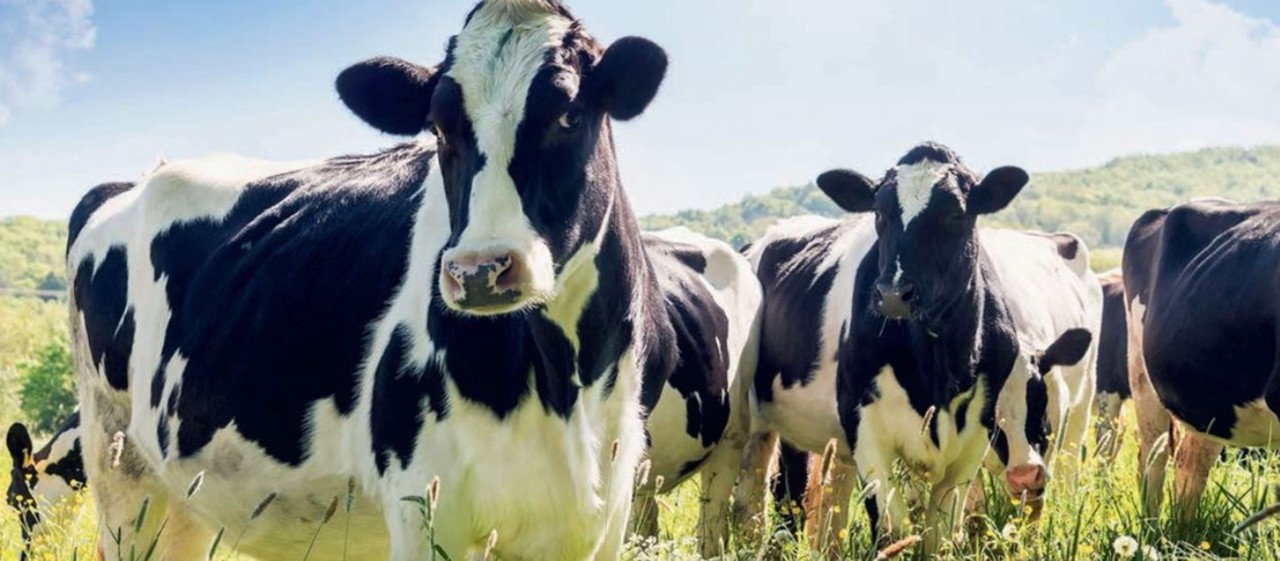
Clean energy from cow dung
23 OCTOBER 2018
German farmers receive government incentives to make biogas out of their fresh cow dung. AgriKomp, a leading creator of renewable energy systems, is there to help them out, using Scania engines to power its biogas plants.
In Germany, government incentives encourage the continuous development of small-scale, climate-friendly biogas power plants. Farmers are offered feed-in tariffs which are guaranteed for 20 years, for the production of electricity from biogas. AgriKomp is one of Germany’s leading developers of biogas power plants. It has constructed 550 renewable energy installations on farms around the country, and more than 850 worldwide.
Power plants produce biogas
The power plants are airtight to enable the anaerobic breakdown of organic material such as slurry, manure and residue from food and agricultural production. This in turn produces biogas. The biogas contains approximately 60 percent methane, 39 percent carbon dioxide and traces of other gases such as hydrogen, nitrogen and hydrogen sulphide. Before being fit for use, the gas is cleaned to remove condensate, hydrogen sulphide and other substances that are harmful to engines. The processed biogas is then used to run a Scania 13-litre industrial engine, which in turn powers a generator. The electricity from the generator is fed into the national grid.
When upgraded to biomethane, biogas can also be used as fuel for vehicles or injected into the national gas grid. The heat generated warms up farm buildings and greenhouses, is sold via district heating networks to neighbours, or is used for industrial applications.
It’s a win-win situation.
“Biogas opens up various utilisation paths in many sectors including transport, heating and electricity,” says Gernot Buchta, Head of Marketing, AgriKomp Group.
“It is storable and can be used when it is needed – for example, if there is a peak in electricity demand,” Buchta continues.
“Biogas plants in flexible operating mode can help to close the demand gap and stabilise the grid. Our BGA-136 power unit with the Scania 13-litre engine is ideally suited to provide flexible energy production.”
Since the mid-1990s, AgriKomp has been developing biogas systems for agricultural businesses and has implemented more than 850 so far. The total installed capacity of these systems is close to 250 MW. Some 400 employees run its network, including its headquarters in Germany, as well as branch offices and partners in the UK, Ireland, France, Switzerland, Italy, the Czech Republic, Poland and Slovakia. The company also runs projects in Canada, Kenya, Russia and China.
Tailor-made solutions for clients worldwide
For the pasttwo years AgriKomp has been using Scania’s 13-litre engine in its tailor-made solutions.
“We scale it down to the required emissions limits and equip it with an oxidation catalyst,” explains Buchta.
“There is no need to adjust anything else. The 13-litre fits with our output range [150 kW to 250 kW] and our efficiency requirements. It’s easy to handle, and spare parts and maintenance services are available worldwide,” he says.
There are now plans to extend AgriKomp’s engine portfolio, with the inclusion of the Scania 9-litre in its product range in 2018, and the 16-litre in 2019. Scania is happy to help in this highly sustainable project.
“Our work with AgriKomp has been a real success story,” says Jörg Franzke, Head of Engines Sales and Service at Scania Germany.
“We started delivering 13-litre engines in 2016, and since then we have continuously grown together,” Franzke adds.
“In this application our engines have a long life cycle of up to 40,000 hours or more, which makes them very attractive for use in power plants, so we hope to enjoy an even higher level of cooperation in the future.”
Engine type
- The Scania engines used for power generation are based on a robust design with a strength-optimised cylinder block containing wet cylinder liners that can easily be exchanged. Individual cylinder heads with four valves per cylinder promote reparability and fuel economy.
- The Scania 13-litre engine: 150 to 250 kW continuous electric power at 1,500 r/min.